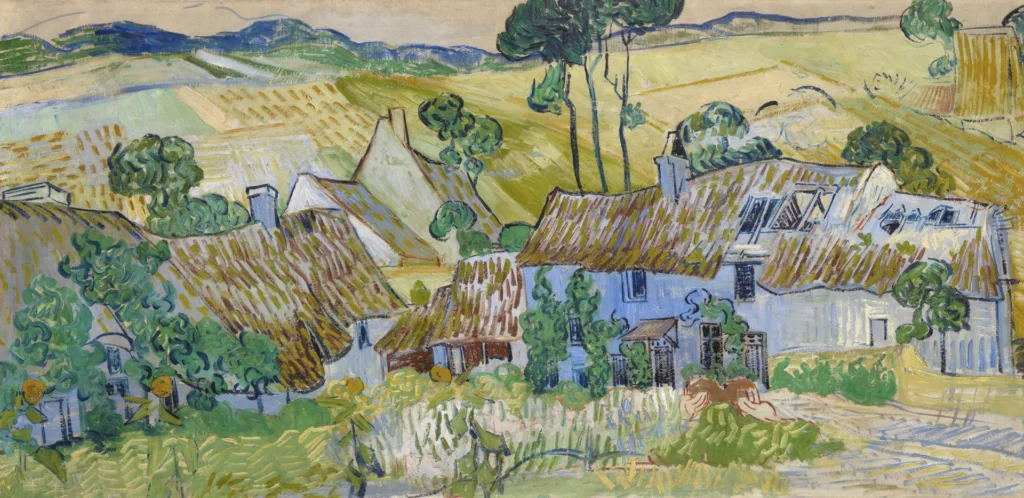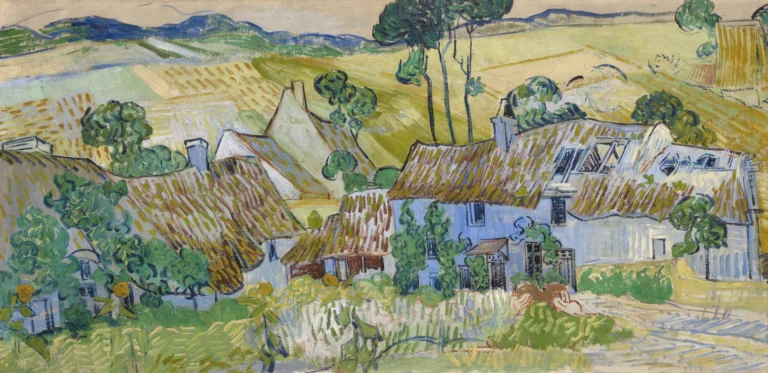Farms Near Auvers (1890)
Created during Vincent van Gogh's tumultuous final months, Farms near Auvers is an oil painting that portrays a row of dilapidated farm buildings nestled against hilly fields. The piece features Van Gogh's signature dynamic brushwork, imbuing the landscape with energy and emotion. Though it appears unfinished, this artwork highlights his fascination with the rural environment of Auvers-sur-Oise, making it a poignant reflection of his artistic journey and personal struggles.
July 1890
About the Artwork
In July 1890, Vincent van Gogh painted Farms near Auvers during a period marked by emotional turbulence and artistic innovation. After leaving the asylum in Saint-Rémy, he sought solace in the picturesque town of Auvers-sur-Oise, where he became enchanted by the local landscapes. The painting reveals his deep connection to the rural scenery, characterized by mossy thatched roofs and vibrant fields. Van Gogh's brushstrokes convey a sense of urgency and raw emotion, indicative of his later style. Tragically, this artwork was created just a month before his death, positioning it as a haunting testament to his legacy as a master of color and expression.
Did You Know
Liked what you see? Add it to your collection.
Enjoyed reading? Share it.
... continued
Creation and Location
Van Gogh painted this work after leaving the asylum at Saint-Rémy in May 1890. He was deeply inspired by the landscapes and architecture of Auvers-sur-Oise, particularly the "mossy thatched roofs" of the local cottages, which he mentioned in a letter to his sister Wil.
Composition and Style
The painting features a row of dilapidated farm buildings set against a backdrop of hills and fields. The composition is characterized by dynamic brushwork, with slashes, commas, and hooks of paint that give the outlines a vibrant and energetic quality. The painting appears to be unfinished, with a hasty and expressive style that was typical of Van Gogh's later works.
Technical Details
- Medium: Oil on canvas
- Dimensions: 50.2 cm × 100.3 cm (19.7 in × 39.5 in)
- Catalogue: F793; JH2114
- Location: The painting is currently part of the collection at The National Gallery in London, although it was originally bequeathed to the Tate Collection in 1933.
Significance
Farms near Auvers is one of Van Gogh's last landscapes, painted just a month before his death. It exemplifies his use of double-square canvases, a format he employed frequently in his final period. The painting reflects his enduring interest in landscapes, influenced in part by Japanese prints, as evidenced by the high point of view he used to depict the cottages nestled into the hills.










